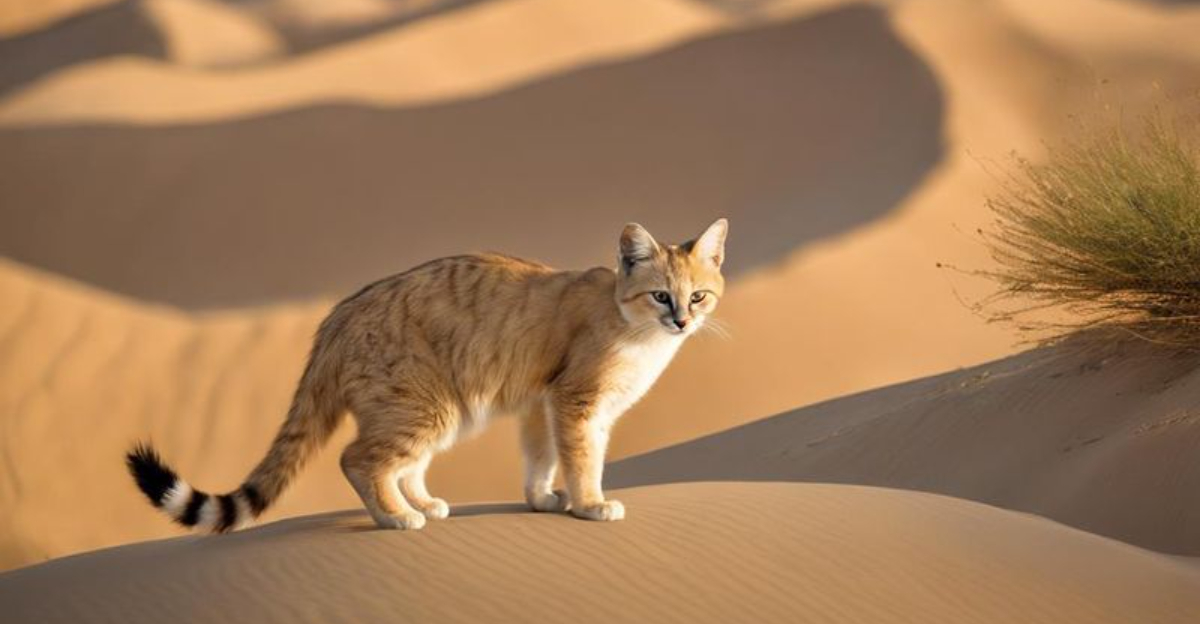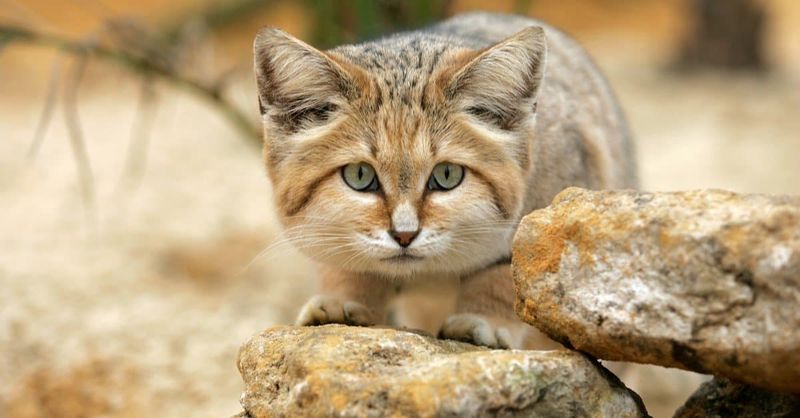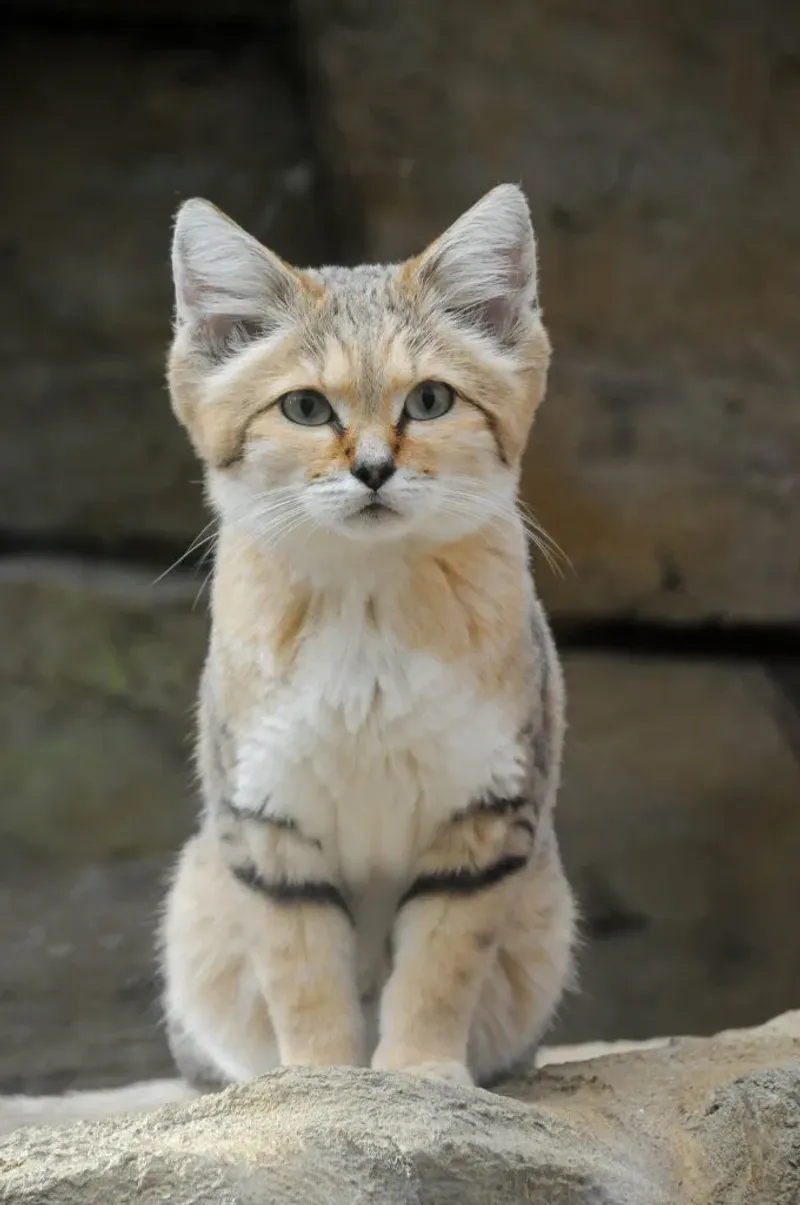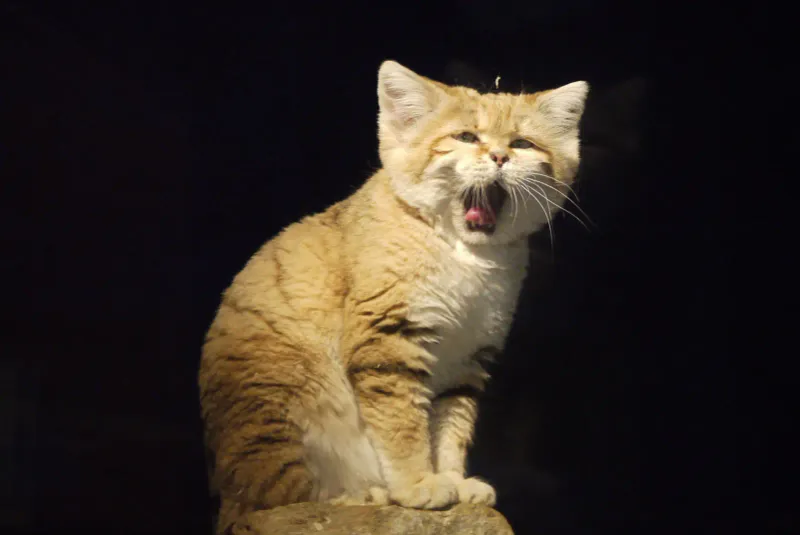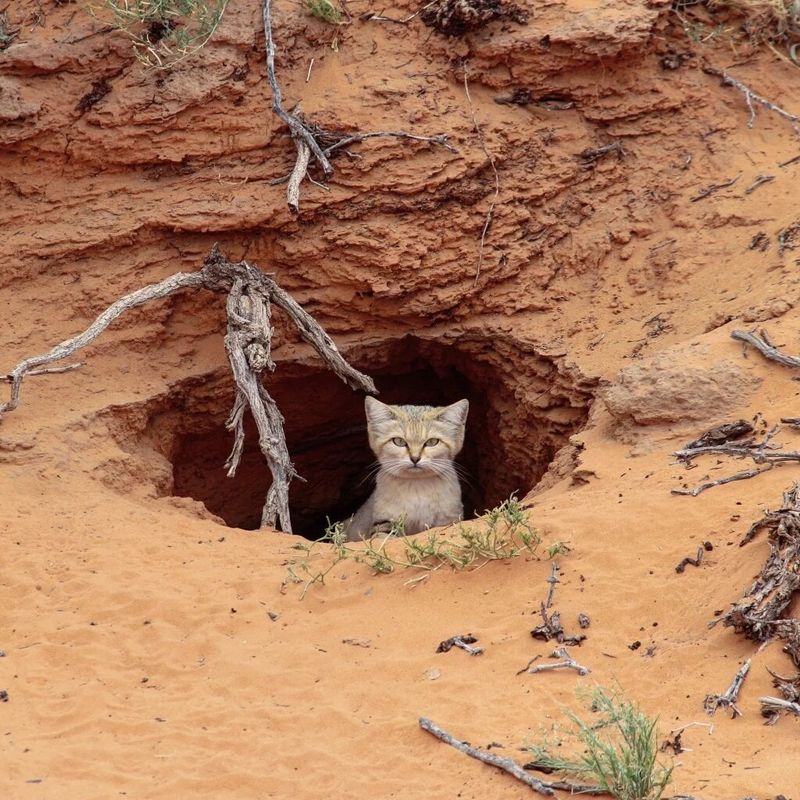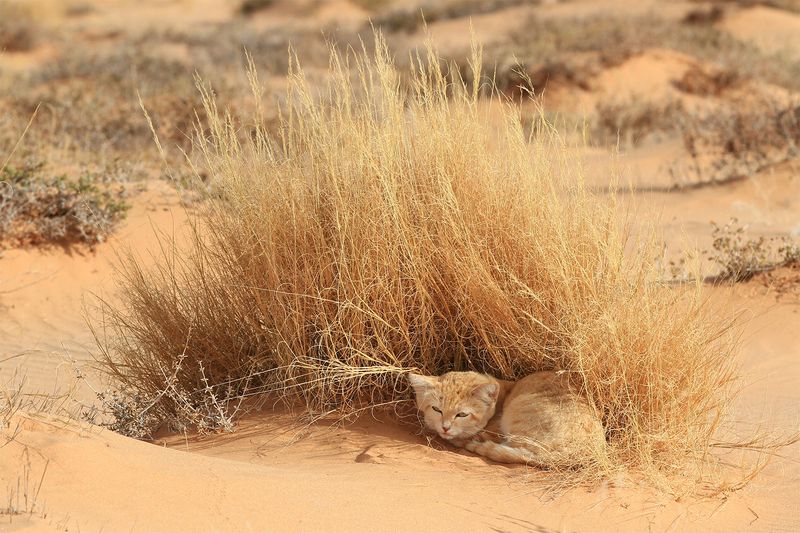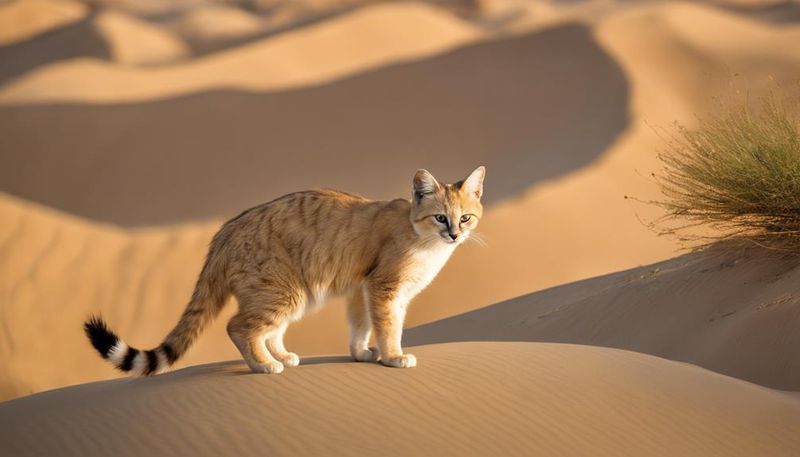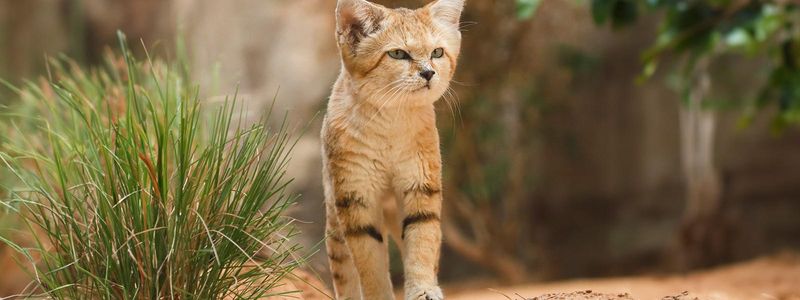📖 Table of Content:
The sand cat, a true survivor of the harsh desert landscapes, is known for its remarkable ability to thrive in extreme conditions. Its adaptations to some of the most arid regions of the world make it a fascinating species to study. With its secretive and elusive nature, this small feline has captured the attention of wildlife enthusiasts and researchers alike.
Thriving in environments where few animals can survive, the sand cat showcases unique traits that aid in its survival. From its keen hunting abilities to its extraordinary physical adaptations, this creature is perfectly suited to life in the desert. Despite its small size, the sand cat is equipped with everything it needs to navigate the harsh environment.
Understanding the sand cat’s behavior and characteristics is crucial to appreciating how it has become a master of desert survival. With its captivating traits and mysterious nature, the sand cat continues to intrigue those who seek to learn more. Let’s delve into eight fascinating facts that shed light on what makes this desert dweller so extraordinary.
1. Desert Specialist
This small feline is a desert specialist, perfectly adapted to thrive in harsh environments. Its thick fur insulates against extreme temperatures, while its furry paws allow it to walk silently on hot sand. The sand cat’s large ears not only enhance its hearing but also help dissipate heat.
Living in the heart of the desert, it can survive without water for weeks, deriving moisture from its prey. This adaptability makes the sand cat a true marvel of evolution, showcasing nature’s creativity in the face of adversity.
2. Secretive Lifestyle
Elusive and mostly nocturnal, the sand cat leads a secretive lifestyle. It prefers to hunt under the cover of darkness, avoiding the heat of the day. This nocturnal behavior helps it stealthily approach small rodents, birds, and reptiles.
By keeping a low profile, the sand cat avoids predators and stays cool. Its secretive nature makes it one of the lesser-studied wild cats, adding to its mystique. People rarely see this feline, as it masters the art of disappearing in its sandy habitat.
3. Unique Vocalizations
Sand cats are known for their distinctive vocalizations, often resembling the barking sound of a small dog. This unique trait helps them communicate over long distances in the vast desert. Their calls are crucial during mating season, helping males and females locate each other.
Despite their small size, their voices carry far, echoing across the barren landscape. This quirky characteristic adds to the sand cat’s charm, further captivating those lucky enough to hear it.
4. Master Burrower
With digging skills that rival any desert creature, the sand cat is a master burrower. It creates burrows to seek shelter from the scorching sun and to raise young. These underground homes provide protection from both predators and extreme weather.
The sand cat’s burrowing capability showcases its ingenuity and survival skills. Burrows are often reused, a testament to the cat’s efficiency in managing its energy and resources. This trait exemplifies the sand cat’s adaptability and resilience.
5. Camouflaged Coats
The sand cat’s coat is perfectly camouflaged for desert life. Its sandy-yellow fur with faint stripes blends seamlessly into the environment, offering natural protection from predators and helping it ambush prey.
This camouflage is vital for both hunting and avoiding threats. The subtle stripes mimic the shadows of rocks and vegetation, enhancing its stealth. This natural disguise highlights the sand cat’s evolutionary success in one of the planet’s harshest habitats.
6. Wide Distribution
Despite being elusive, the sand cat boasts a wide distribution across North Africa, the Middle East, and Central Asia. It inhabits a range of arid regions, from rocky deserts to sandy plains.
This broad distribution reflects its adaptability and resilience. However, human activities threaten its habitat, posing challenges to its survival. Conservation efforts aim to protect these regions, ensuring the sand cat continues to roam free across its native lands.
7. Endearing Appearance
With its large eyes and oversized ears, the sand cat has an undeniably endearing appearance. These features give it an almost cartoon-like look, capturing the hearts of those who see it. The cat’s expressive face and plush fur invite admiration, conveying a sense of wonder.
These charming traits make the sand cat not just a survivor but also a symbol of the beauty found in nature’s diversity. Its appearance serves as a reminder of the delicate balance of life in the desert.
8. Conservation Challenges
The sand cat faces numerous conservation challenges, mainly due to habitat loss and human encroachment. Efforts are underway to protect its natural environment and ensure its survival. Protected areas and conservation programs aim to preserve these unique creatures and their habitats.
Raising awareness about the sand cat’s plight is crucial for its conservation. By understanding the threats it faces, more people can contribute to efforts to protect this remarkable species. Its survival depends on our collective efforts to conserve the fragile desert ecosystems it calls home.
